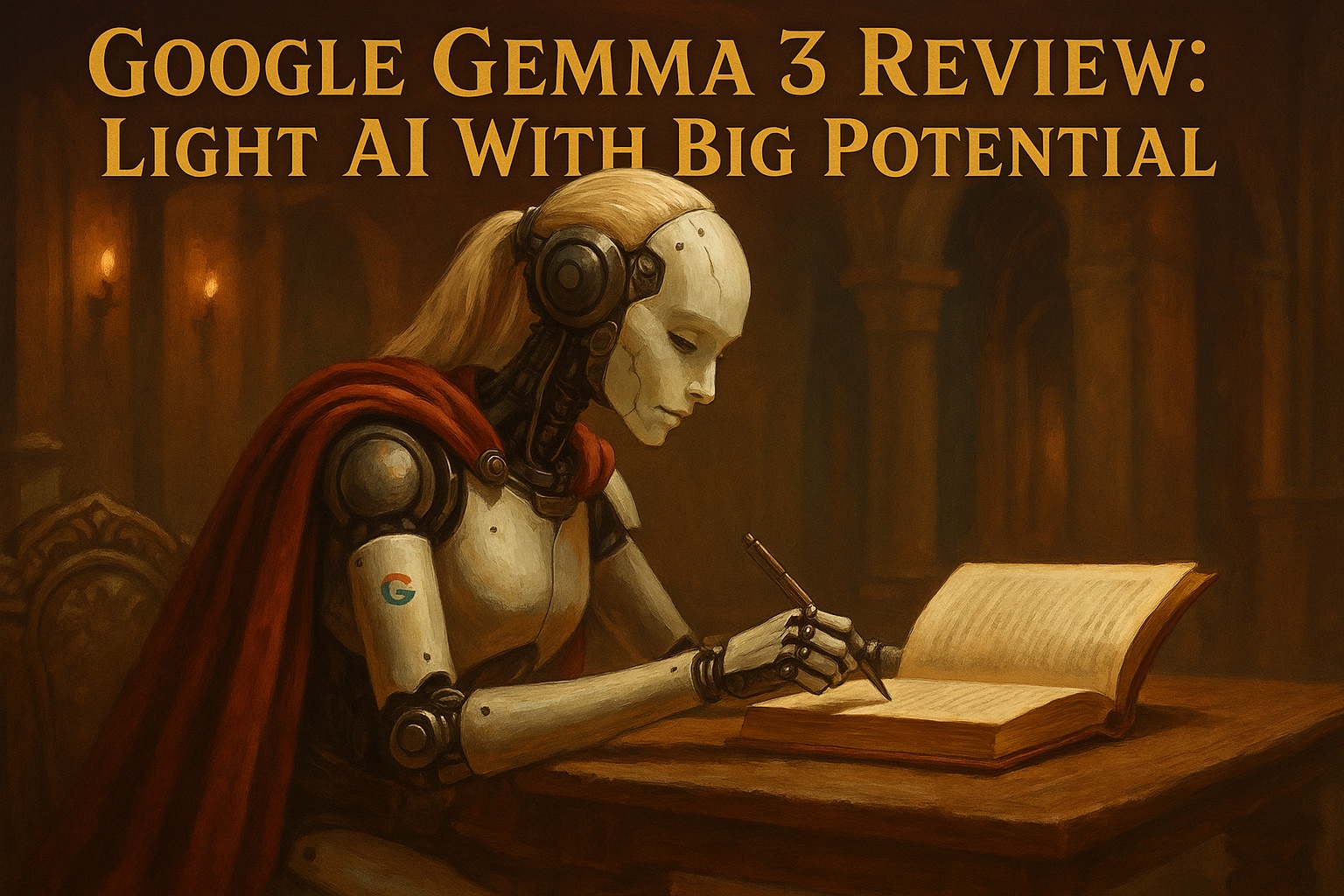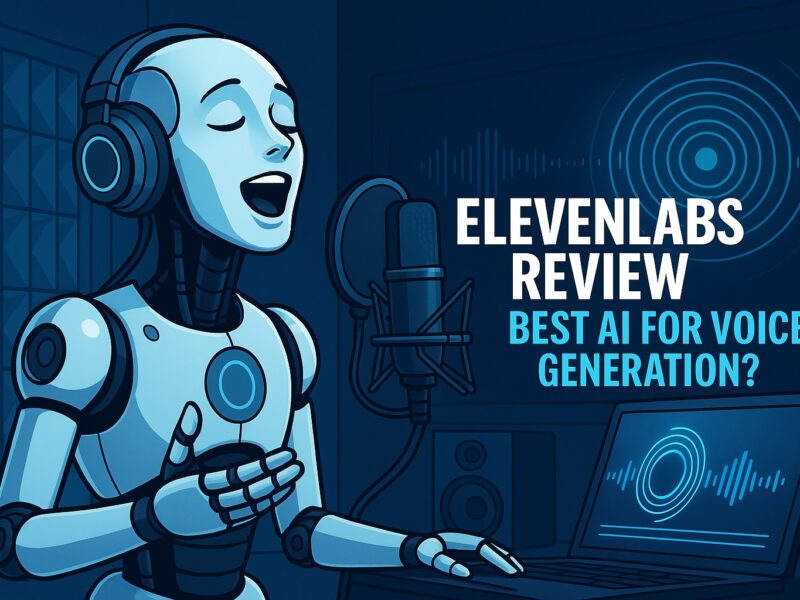Google Gemma review searches are trending in 2025 as developers and AI researchers look for open, efficient alternatives to massive language models like GPT-4 and Claude 3. Enter Gemma 3—Google’s light, fine-tunable LLM designed for speed, transparency, and local deployment. But does this compact model deliver real performance and versatility? Let’s find out.
What Is Google Gemma?
Gemma is Google’s family of open-source language models, developed by DeepMind and released under a commercially permissive license. Positioned as a lighter alternative to models like Gemini 1.5, Gemma focuses on small-scale deployment, fine-tuning, and efficiency without sacrificing quality. The latest version, Gemma 3, launched in 2025 and comes in two sizes—2B and 7B parameters—both trained using Google’s JAX and TPU infrastructure.
The model is available through major AI platforms including Hugging Face, Kaggle, Google Colab, and Vertex AI, making it easily accessible for developers, educators, and startups.
Google Gemma Review: Key Features
- Lightweight Architecture: Runs on consumer GPUs (even some laptops) and edge devices with 16GB+ RAM.
- Open Weights: Full access to model weights allows for local deployment and custom fine-tuning.
- Safe by Design: Trained with strong alignment and safety techniques using reinforcement learning from human feedback (RLHF).
- Multilingual Support: Capable of generating and understanding content in over 25 languages.
- Plug-and-Play: Available in common AI stacks with no vendor lock-in.
Performance: How Does Gemma 3 Compare?
In this Google Gemma review, performance is key. While not built to beat GPT-4 on creativity or depth, Gemma excels in tasks that balance cost, control, and accuracy:
- On MMLU (language understanding): Gemma 7B slightly trails LLaMA 3 8B but beats earlier Mistral 7B models.
- On GSM8K (math reasoning): Scores 79–81%, making it reliable for logical tasks.
- Code Generation: Performs well on lightweight code tasks; best paired with fine-tuned datasets.
- Latency: Extremely low when run locally or via optimized cloud setups, outperforming many closed models on inference speed.
Gemma isn’t designed for flashy chat conversations. Its strength lies in its accessibility and practical integration into tools and workflows.
Use Cases for Google Gemma
Gemma’s compact size and open licensing make it ideal for:
- Academic Research: Train or modify Gemma models without ethical or licensing barriers.
- Custom AI Assistants: Build local chatbots with specific company data and tone.
- Edge AI: Deploy AI models on hardware like Raspberry Pi, mobile devices, or offline kiosks.
- Educational Tools: Use Gemma to build language learning, tutoring, or STEM explainer bots.
- Low-Cost SaaS Products: Deliver LLM features without recurring API fees.
Gemma vs LLaMA vs Mistral
Google isn’t alone in the open-source LLM space. Here’s how Gemma 3 compares:
- Versus LLaMA 3: Meta’s LLaMA 3 offers slightly better accuracy at larger sizes but lacks Gemma’s simplicity and built-in safety layers.
- Versus Mistral: Mistral 7B is faster at raw token output, but Gemma outperforms it in factual tasks and multilingual understanding.
- Versus GPT-4/Gemini 1.5: These are more powerful but closed-source, expensive, and not deployable locally without API calls.
In terms of openness, trust, and performance-per-dollar, Gemma is leading the charge for lightweight AI.
Deployment and Developer Support
Gemma is available through:
- Hugging Face Transformers (with pre-trained and instruction-tuned checkpoints)
- Colab and Kaggle: Run instantly with sample notebooks
- Google Cloud Vertex AI: For scalable and managed infrastructure
- TensorFlow and JAX Libraries: For full customization and model compression
Google also provides detailed usage guides, safety best practices, and licensing terms, making it one of the most developer-friendly models in its class.
Pros and Cons of Google Gemma
- Pros: Lightweight, open-source, runs locally, multilingual, highly customizable, safe for production.
- Cons: Not as strong in long-form generation, lacks advanced vision or multimodal capabilities, no built-in UI tools like ChatGPT.
Recent Updates in 2025
Since its release, Google has rolled out several enhancements to Gemma:
- Instruction-Tuned Gemma 3.1: Improved prompt understanding and reasoning capabilities.
- RLHF Layer Enhancements: Better refusal handling and ethical guardrails.
- Low-RAM Optimization: New 2B version works with just 12GB VRAM and below.
- Google Workspace Integration (beta): Developers can embed Gemma assistants into Docs, Sheets, and Gmail workflows.
Who Should Use Google Gemma?
This Google Gemma review confirms that the model is ideal for:
- Developers building open, local-first AI applications
- Teams looking to experiment without API costs
- Educators and researchers needing ethical, open-access models
- Enterprises wanting private deployments and full control
Gemma may not be the most powerful model overall, but it is one of the most practical, flexible, and responsible in its category.
Final Verdict: Is Google Gemma Worth It?
This Google Gemma review shows that Google has carved out a unique space in the AI world—providing open, efficient, and developer-friendly LLMs for real-world use. Gemma 3 won’t replace GPT-4 in chat quality, but it doesn’t have to. It thrives where speed, privacy, and control matter.
If you’re looking for a fast, flexible, and open-source AI model for your next project, Google Gemma is absolutely worth exploring in 2025.


